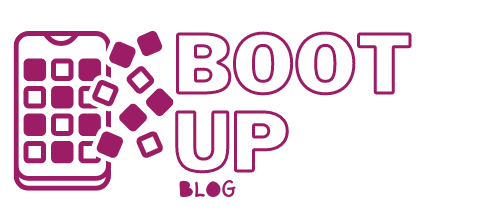The healthcare industry has witnessed a technological revolution over the past few decades, with innovations that are dramatically transforming patient care. These advancements in technology have the potential to improve diagnosis, treatment, and overall patient outcomes. In this article, we’ll explore how tech innovations are revolutionizing patient care and what it means for the future of healthcare.
1. Telemedicine: Bridging the Distance
Telemedicine has gained significant traction, especially in the wake of the COVID-19 pandemic. This technology allows patients to consult with healthcare providers remotely, offering immediate access to medical advice and reducing the need for in-person visits. Telemedicine is particularly beneficial for patients in remote or underserved areas, those with mobility issues, and individuals seeking quick consultations.
Not only does telemedicine enhance access to care, but it also reduces healthcare costs and minimizes the risk of exposure to infectious diseases. Patients can now receive timely consultations, prescriptions, and follow-up care from the comfort of their own homes.
2. Electronic Health Records (EHRs): Comprehensive Patient Data
Electronic Health Records (EHRs) have replaced traditional paper records in healthcare facilities. EHRs store and manage a patient’s medical history, medications, allergies, test results, and treatment plans digitally. This innovation has revolutionized the way healthcare providers access and share patient information, leading to better-coordinated care.
EHRs enable real-time updates, allowing multiple healthcare professionals to access a patient’s records simultaneously. This not only improves efficiency but also reduces the risk of errors due to missing or outdated information. Patients benefit from more accurate diagnoses and safer, more effective treatment.
3. Artificial Intelligence (AI): Enhanced Diagnostics
Artificial intelligence is making waves in the healthcare industry, particularly in diagnostic procedures. Machine learning algorithms can analyze vast amounts of medical data, helping healthcare professionals identify diseases, tumors, and anomalies with greater accuracy and speed.
AI applications, such as image recognition, can process medical images like X-rays, MRIs, and CT scans, highlighting abnormalities that might be missed by the human eye. These tools are invaluable for early disease detection, allowing for prompt intervention and improved patient outcomes.
4. Wearable Health Devices: Personalized Care
Wearable health devices, like fitness trackers and smartwatches, have empowered individuals to take control of their health. These devices can monitor vital signs, activity levels, sleep patterns, and more. They provide users with real-time health data and insights into their overall well-being.
Healthcare providers can also leverage data from wearables to monitor patients’ conditions remotely. For example, patients with chronic diseases like diabetes can share their blood sugar levels and activity data with their physicians. This technology encourages patients to adopt healthier lifestyles, adhere to treatment plans, and actively participate in their care.
5. 3D Printing: Customized Medical Devices
3D printing technology has revolutionized the creation of custom medical devices and prosthetics. Surgeons can now design and fabricate implants, instruments, and models of patients’ anatomy for surgical planning. Customized prosthetics, orthopedic implants, and dental devices are improving patient outcomes and quality of life.
This technology enables faster and more affordable production of patient-specific devices, reducing the waiting time for treatment. Patients can benefit from a higher degree of precision and comfort, as these devices are tailored to their unique needs.
6. Robotic Surgery: Precision and Minimally Invasive Procedures
Robotic surgery combines the precision of technology with the expertise of skilled surgeons. Surgeons can use robotic systems to perform intricate and minimally invasive procedures. The robots’ mechanical arms can execute delicate movements with greater precision than the human hand, reducing the risk of complications and shortening recovery times.
Robotic-assisted surgery is used in various fields, including urology, gynecology, and cardiology. Patients undergoing these procedures often experience less pain, shorter hospital stays, and faster recoveries.
7. Data Analytics: Informed Decision-Making
Data analytics tools are helping healthcare providers make more informed decisions. By processing vast amounts of medical data, these tools can identify trends, predict disease outbreaks, and optimize treatment plans.
Additionally, data analytics can be applied to public health initiatives, helping governments and healthcare organizations monitor the spread of diseases and allocate resources more efficiently. This technology is vital for the early detection and containment of health threats, as demonstrated during the COVID-19 pandemic.
8. Remote Patient Monitoring: Continuous Care
Remote patient monitoring enables healthcare providers to track patients’ health outside of traditional clinical settings. Devices and sensors can collect and transmit patient data in real-time, offering insights into their health status. This technology is particularly valuable for patients with chronic conditions, as it allows for continuous monitoring and early intervention.
Patients can feel more confident about their well-being, knowing that healthcare providers are keeping a watchful eye on their health. Remote monitoring helps prevent complications and hospital readmissions, improving patient care and reducing healthcare costs.
Tech innovations in healthcare are transforming patient care by improving accessibility, accuracy, and personalized treatment. These advancements have the potential to revolutionize the healthcare industry, making it more efficient, cost-effective, and patient-centered. As technology continues to evolve, it will undoubtedly play a central role in shaping the future of healthcare, ultimately benefiting patients and healthcare providers alike.

